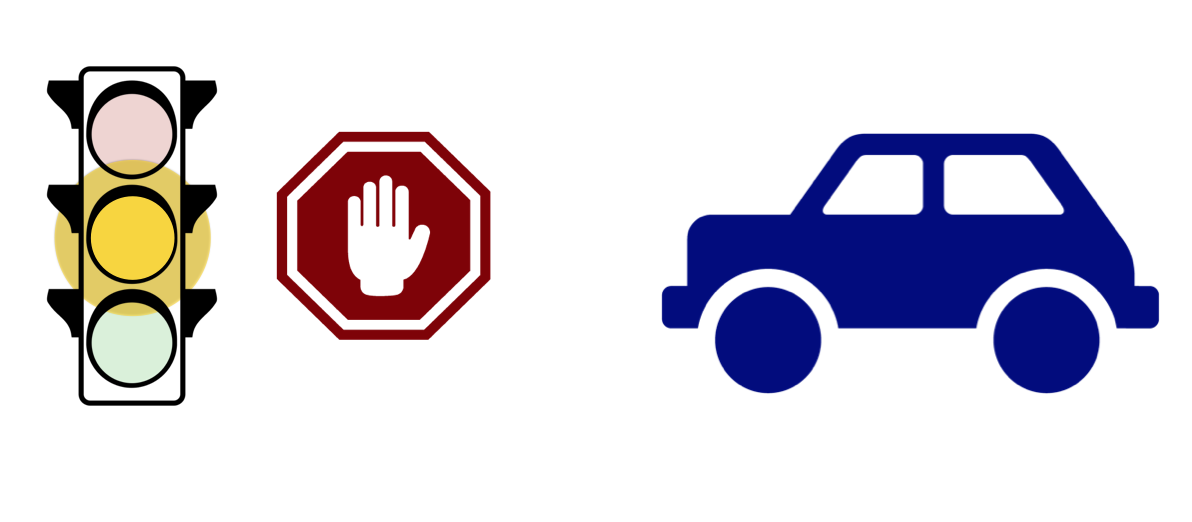36. Learning Objectives - Bayes' Rule
Learning Objectives - Bayes' Rule
The following questions will help you review what you learned in the Bayes' Rule lesson.
Prior knowledge
For questions 1-3, assume you already have the following knowledge:
You’re interested in finding out the probability of a car stopping if it sees a yellow traffic light.
Past data tells you that the probability of a car stopping at a traffic light intersection is P(S) = 0.40.
You also know that the past probability of a traffic light being yellow (as opposed to red or green) is P(Y) = 0.10.

Car stopping at a yellow light
Traffic Light q1
SOLUTION:
P(Y|S) = 0.12Traffic Light q2
SOLUTION:
0.48Traffic Light q3
SOLUTION:
Prior probabilitiesQuestions 4 and 5 are different scenarios.
Prior knowledge for question 4:
On a four-lane highway, cars are either going fast or not fast. Faster cars should go in the leftmost lanes.
At any given time, 20% of cars are in the left-most lane.
Overall, 40% of cars on the highway are classified as going fast.
Out of all the cars in the leftmost lane, 90% are going fast.
Bayes q2
SOLUTION:
0.45Bayes' rule is not only used to incorporate sensor data into an estimate; it’s also often used to incorporate test data into a medical diagnosis.
Prior knowledge for question 5:
- 1% of all people have cancer.
- 90% of people who have cancer test positive when given a cancer-detecting blood test, meaning the test detects cancer 90% of the time.
- 5% of people will have false positives, meaning that 5% of the time, this test will produce a positive result when people do not have cancer.
Bayes q3